IED attacks in Iraq peaked in 2007.
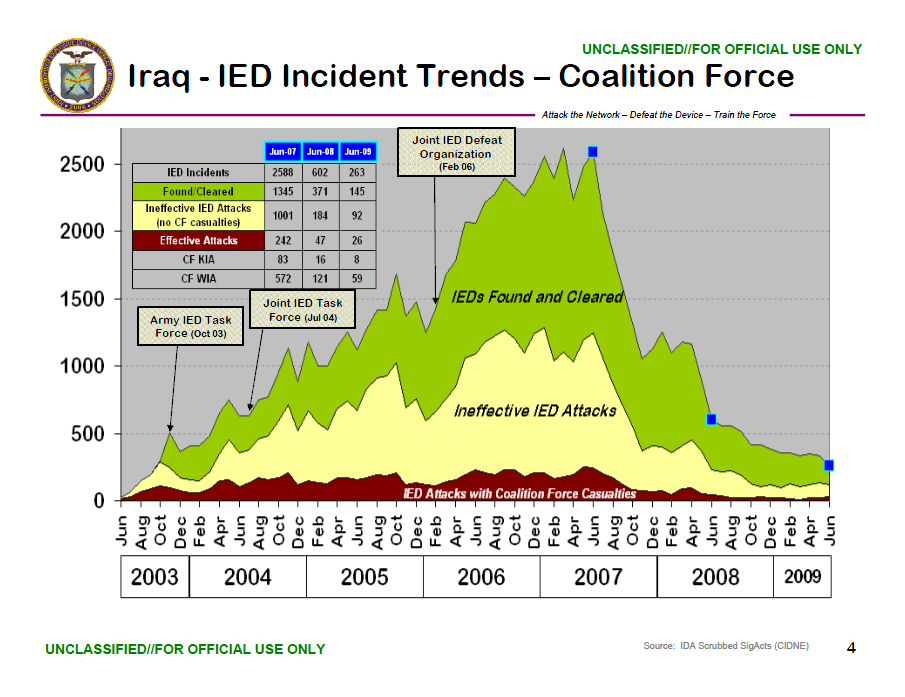
One IED type in particular that spooked coalition forces were explosively formed penetrators (EFPs).
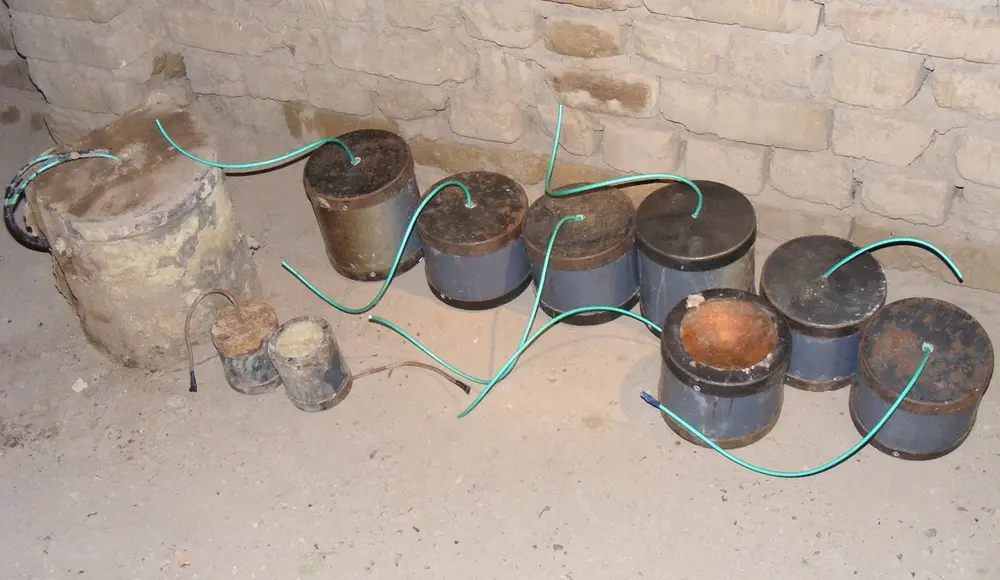
They killed almost 200 US troops in Iraq between 2005 and 2011. An EFP is a shaped charge, similar in some ways to a HEAT charge. However while a HEAT charge takes advantage of the Munroe effect by focusing an explosive effect on a deeply V-shaped linear material, an EFP uses the Misznay–Schardin effect to launch a more shallowly shaped liner, usually disc shaped, over a longer distance.

This ability for EFPs to penetrate armor from further away made them a popular choice in IEDs aimed at coalition vehicles. The IEDs could be placed off of the road but aimed in the direction of travel, waiting to hit passing vehicles.
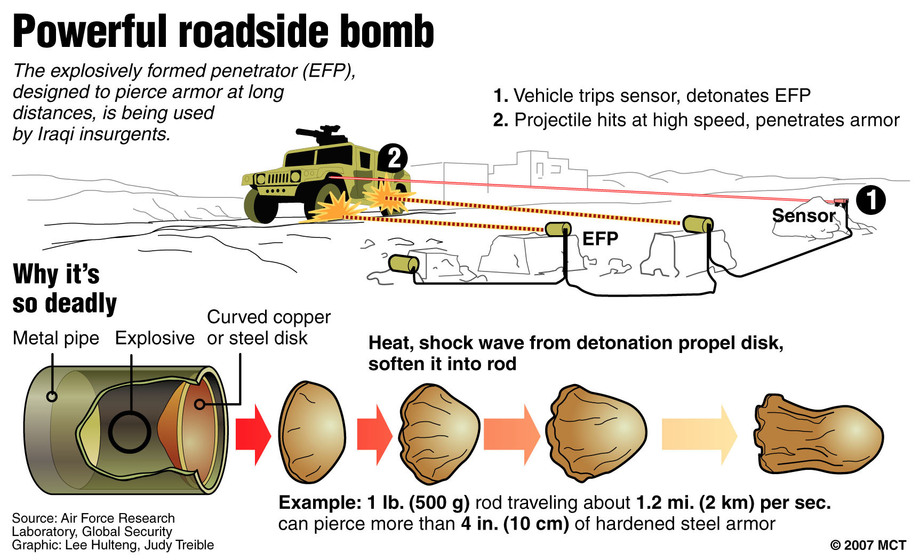
EFPs were planted in various ways. Arrays of multiple EFPs were not uncommon. The following presentation to troops from 2010 shows an EFP array
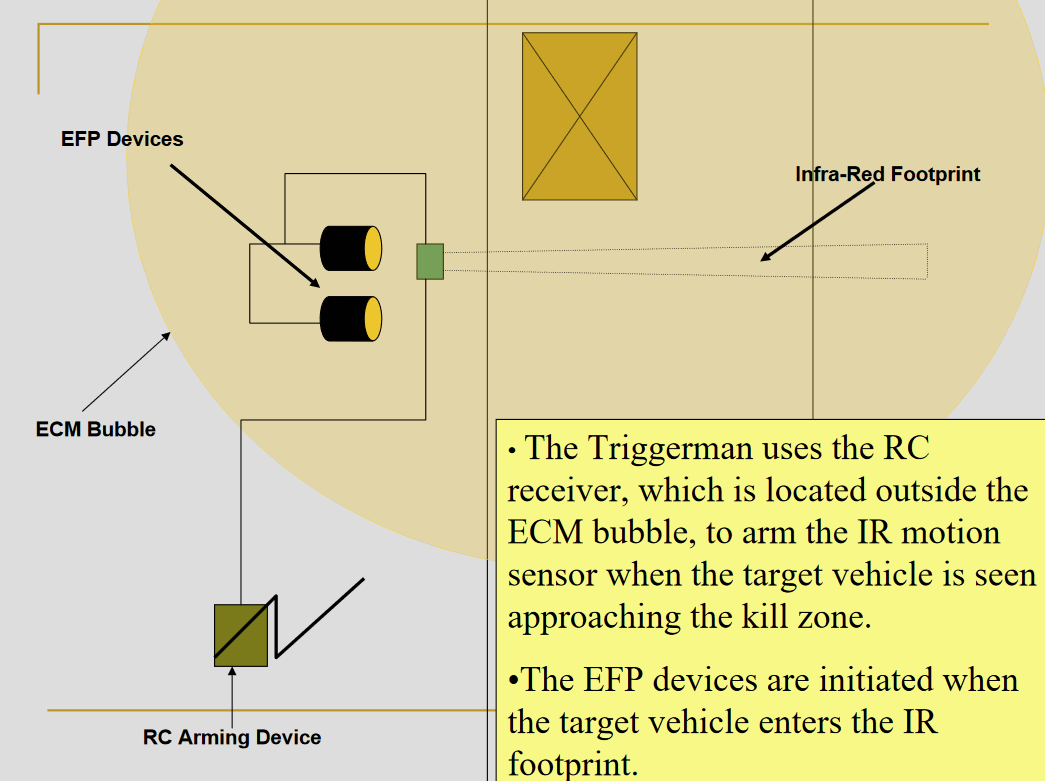
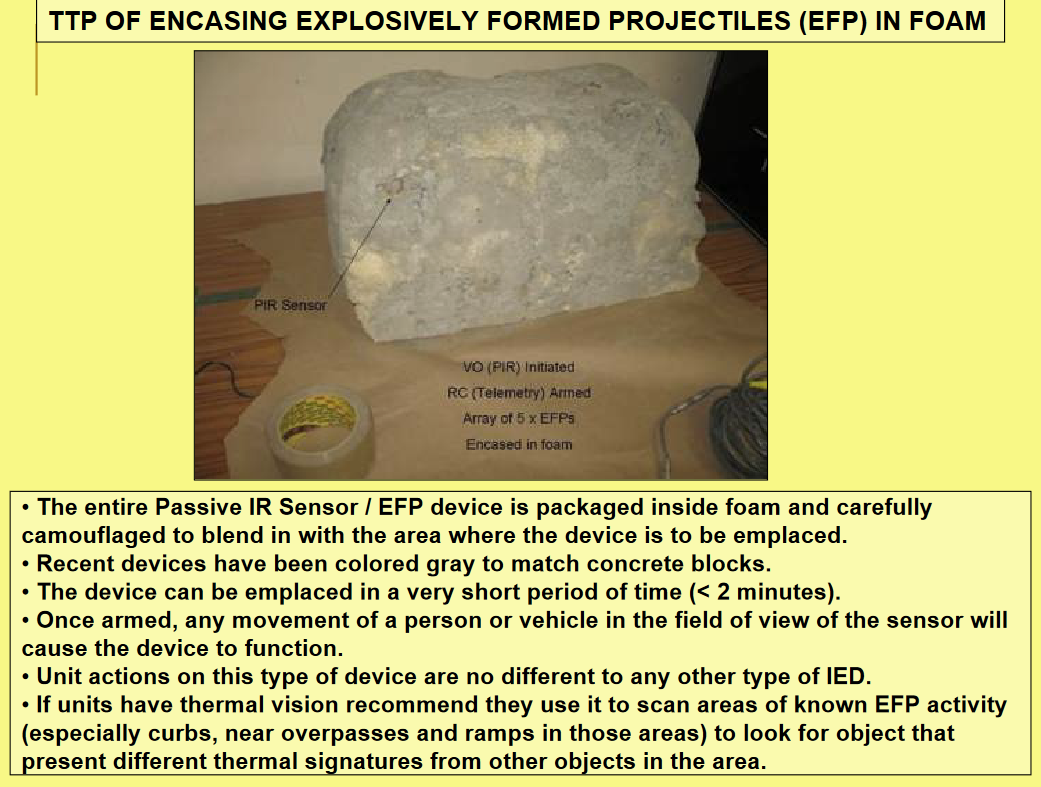

This presentation demonstrates the common triggering mechanism of passive infrared (PIR). PIR is used in many motion detecting applications. It detects motion by sensing temperature differences.
While military leadership worked to create a solution to this IED that was difficult to detect and impossible to jam with electronic counter measures, soldiers created an expedient solution. From a 2007 Washington Post article:
Meanwhile, soldiers in the field pursued their own solutions. Because a passive infrared sensor reacted to heat signatures, one inventive trooper proposed mounting a giant hair dryer on a bumper to blow hot air in front of the vehicle. Another took a toaster purchased at a bazaar, plugged it into his Humvee and dangled the glowing appliance from a long pole welded to the front of the vehicle. A similar but more practical idea, also proposed by a soldier, became a countermeasure called Rhino. A glow plug – a pencil-shaped object with an electrical heating element, often used in diesel engines – was placed inside a metal ammunition can, which was then attached to a metal pole 10 feet in front of a Humvee or truck. The red-hot can decoyed the infrared sensor into triggering prematurely so that the copper EFP slug fired at the Rhino rather than the vehicle.
The solution of placing a decoy on a stick in front of vehicles worked for several weeks until insurgents adjusted their tactics by aiming the EFPs offset from the sensor. From the Washington Post:
“Anything that’s effective becomes ineffective,” an Army colonel observed, “because this enemy will morph.” The counter-countermeasure in turn provoked further measures in a variation called Rhino II, including the use of a telescoping pole that let troops vary the distance between glow plug and vehicle. Rhino II would remain a standard feature on U.S. military vehicles in Iraq. At a cost of $1,800 each, more than 13,000 have been built, mostly at Letterkenny Army Depot in central Pennsylvania. The rectangular box on a long pole protrudes from nearly every Humvee and truck sent into harm’s way in Iraq.
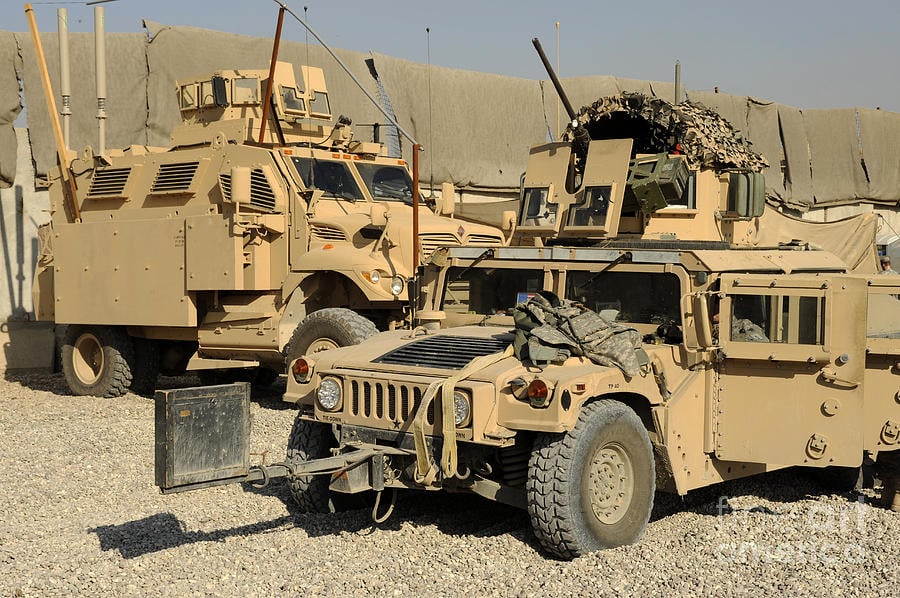
The Rhino II, developed by the Joint IED Defeat Organization (JIEDDO) and the Army Research Laborary, went on to become a ubiquitous sight on American vehicles in Iraq. This distinct black square on a stick was found on humvees, Stykers, and even various MRAP models. More than 16,000 Rhino II devices were deployed to the U.S. Army and Marines in Iraq by the end of 2008.
By 2010, insurgent tactics had begun to disfavor the use of PIR, making the Rhino IIs no longer a needed counter-measure. The continued withdrawal of US troops from Iraq reduced the amount of patrols being undertaken, which further reduced the need for Rhino II counter measures, and they are no longer a common sight on US military vehicles.
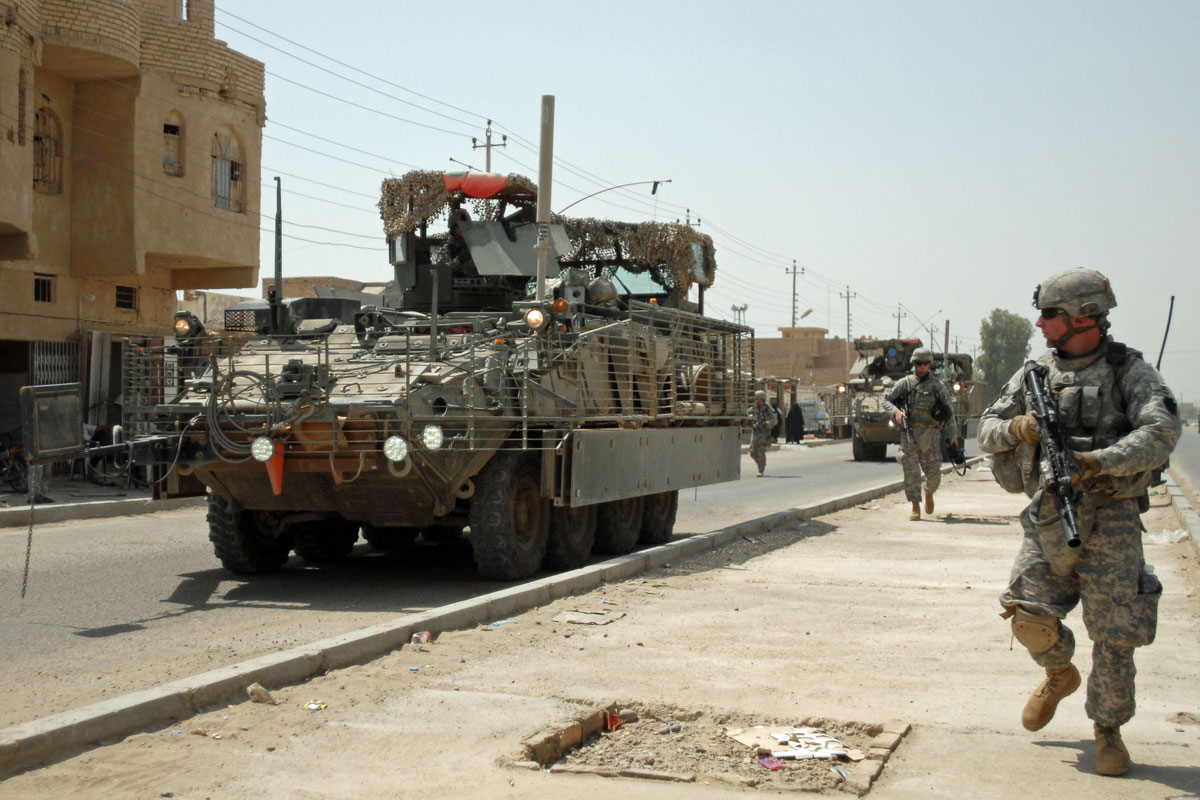

Washingtonpost source on casualties.
Washingtonpost 2007 article on Rhinos.

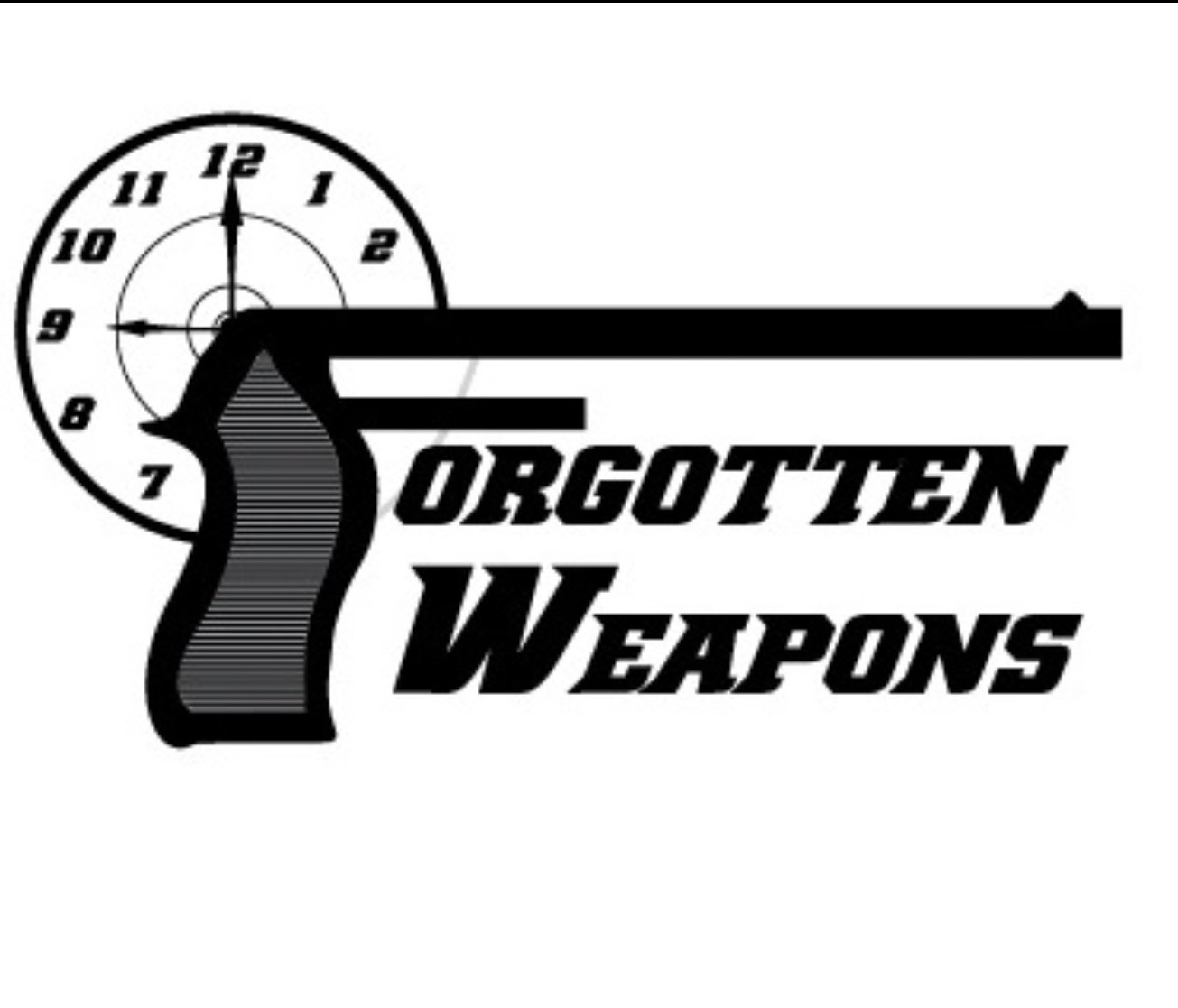
Ngl, it’s a lotta bit weird seeing my misspent twenties as a source of internet curiosity.
Right?
We lived a war that was in the infancy of modern media coverage. It’s weird my firefights are on YouTube.
It’s weirder to know I could be retiring this year if I had stayed in.
I don’t feel like it was that long ago, but we are those guys now.